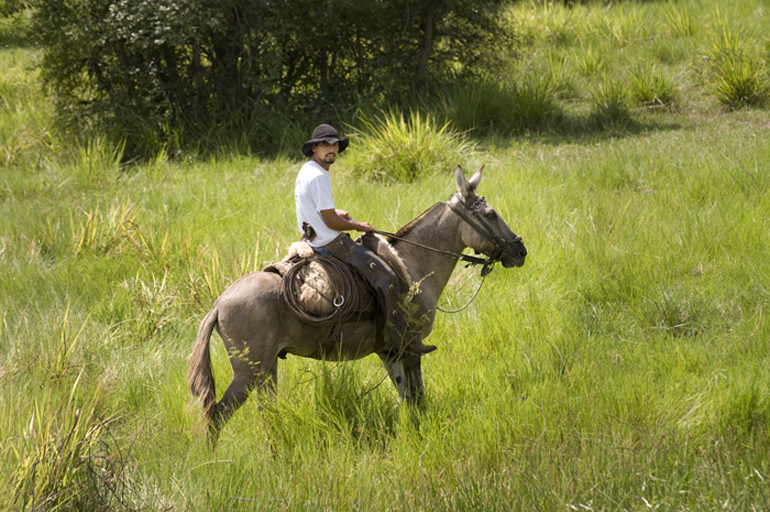
Isolation and seasonal flooding may not be enough to preserve the unique ranching culture of the Pantanal. There are threats from without and within. The grand old ranches are few and far between today, most of them having been divided among heirs for so many generations that the parcels are now too small to support herds that pay. That is unless you clear the high forests which would be a death knell to wildlife, so much a part of the essential Pantanal character. And clearing forests will lead to erosion and loss of high ground with the possibility of total seasonal flooding, as in the Amazon.
An even bigger threat lies to the northeast. Here agribusiness-soybean and cotton plantations-is proliferating rapidly. Eroded sediments, carrying a cargo of damaging fertilizer and herbicides, are washing across the floodplain, threatening much of the Pantanal. And these powerful business groups are lobbying the government to dredge the Paraguay River for supertankers and then build superhighways across the region to whisk their goods to market. Such massive projects would be disastrous for the Pantanal's fragile hydraulics, and, therefore, its unique way of life.
In
the seventies, to ease population pressure along the coast, the Brazilian
government began encouraging westward migration with offers of free
land. All you had to do was show up, stake a claim, and start farming
or ranching. Many of them did so in the area around the Pantanal. The
Pantanal's ranchers, contending with seasonal flooding, could not compete
with the new arrivals, able to ranch full time. More cattle came to
market and prices tumbled. It was no contest. The fiercely proud ranchers
of the Pantanal reluctantly turned to ecotourism to supplement their
dwindling incomes. (next photo)